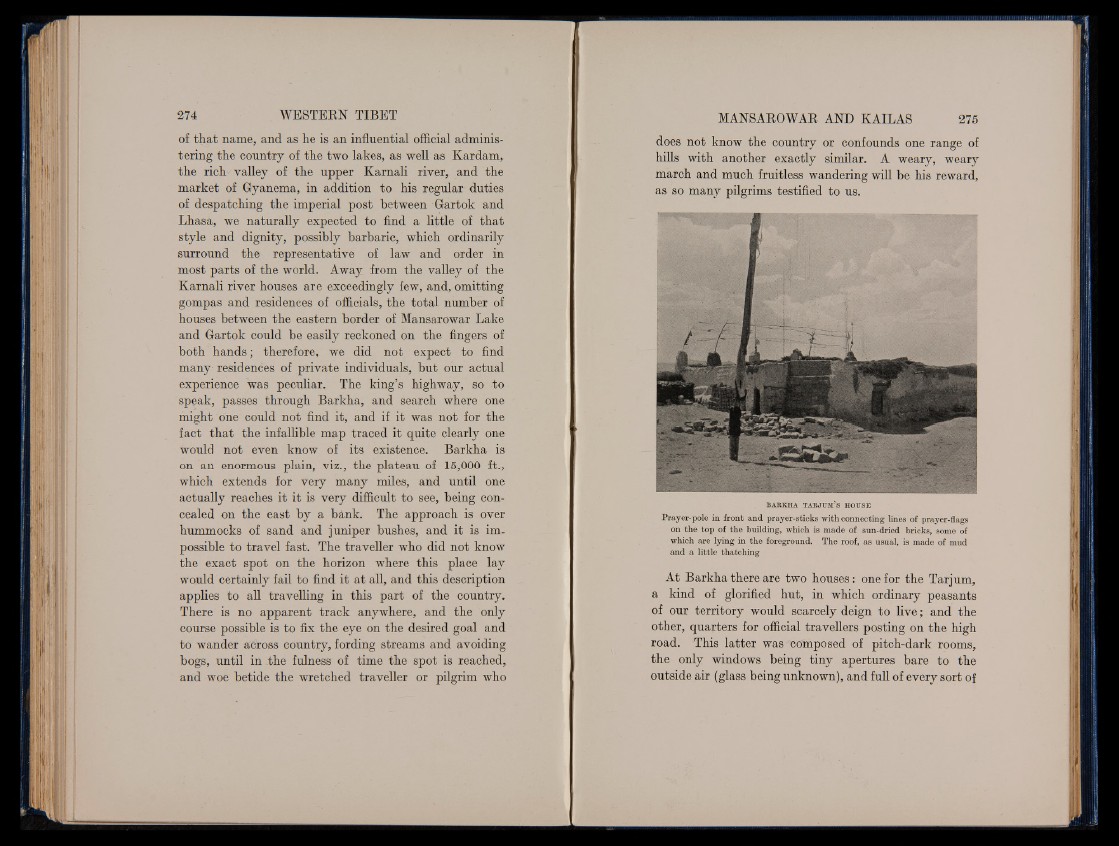
of that name, and as he is an influential official administering
the country of the two lakes, as well as Kardam,
the rich valley of the upper Karnali river, and the
market of Gyanema, in addition to his regular duties
of despatching the imperial post between Gartok and
Lhasa, we naturally expected to find a little of that
style and dignity, possibly barbaric, which ordinarily
surround the representative of law and order in
most parts of the world. Away from the valley of the
Karnali river houses are exceedingly few, and, omitting
gompas and residences of officials, the total number of
houses between the eastern border of Mansarowar Lake
and Gartok could be easily reckoned on the fingers of
both hands; therefore, we did not expect to find
many residences of private individuals, but our actual
experience was peculiar. The king’s highway, so to
speak, passes through Barkha, and search where one
might one could not find it, and if it was not for the
fact that the infallible map traced it quite clearly one
would not even know of its existence. Barkha is
on an enormous plain, viz., the plateau of 15,000 ft,,
which extends for very many miles, and until one
actually reaches it it is very difficult to see, being concealed
on the east by a bank. The approach is over
hummocks of sand and juniper bushes, and it is impossible
to travel fast. The traveller who did not know
the exact spot on the horizon where this place lay
would certainly fail to find it at all, and this description
applies to all travelling in this part of the country.
There is no apparent track anywhere, and the only
course possible is to fix the eye on the desired goal and
to wander across country, fording streams and avoiding
bogs, until in the fulness of time the spot is reached,
and woe betide the wretched traveller or pilgrim who
does not know the country or confounds one range of
hills with another exactly similar. A weary, weary
march and much fruitless wandering will be his reward,
as so many pilgrims testified to us.
BAEKHA TAKJTTm’s HOUSE
Prayer-pole in front and prayer-sticks with connecting lines of prayer-flags
on the top of the building, which is made of sun-dried bricks, some of
which are lying in the foreground. The roof, as usual, is made of mud
and a little thatching
At Barkha there are two houses: one for the Tarjum,
a kind of glorified hut, in which ordinary peasants
of our territory would scarcely deign to live; and the
other, quarters for official travellers posting on the high
road. This latter was composed of pitch-dark rooms,
the only windows being tiny apertures bare to the
outside air (glass being unknown), and full of every sort of